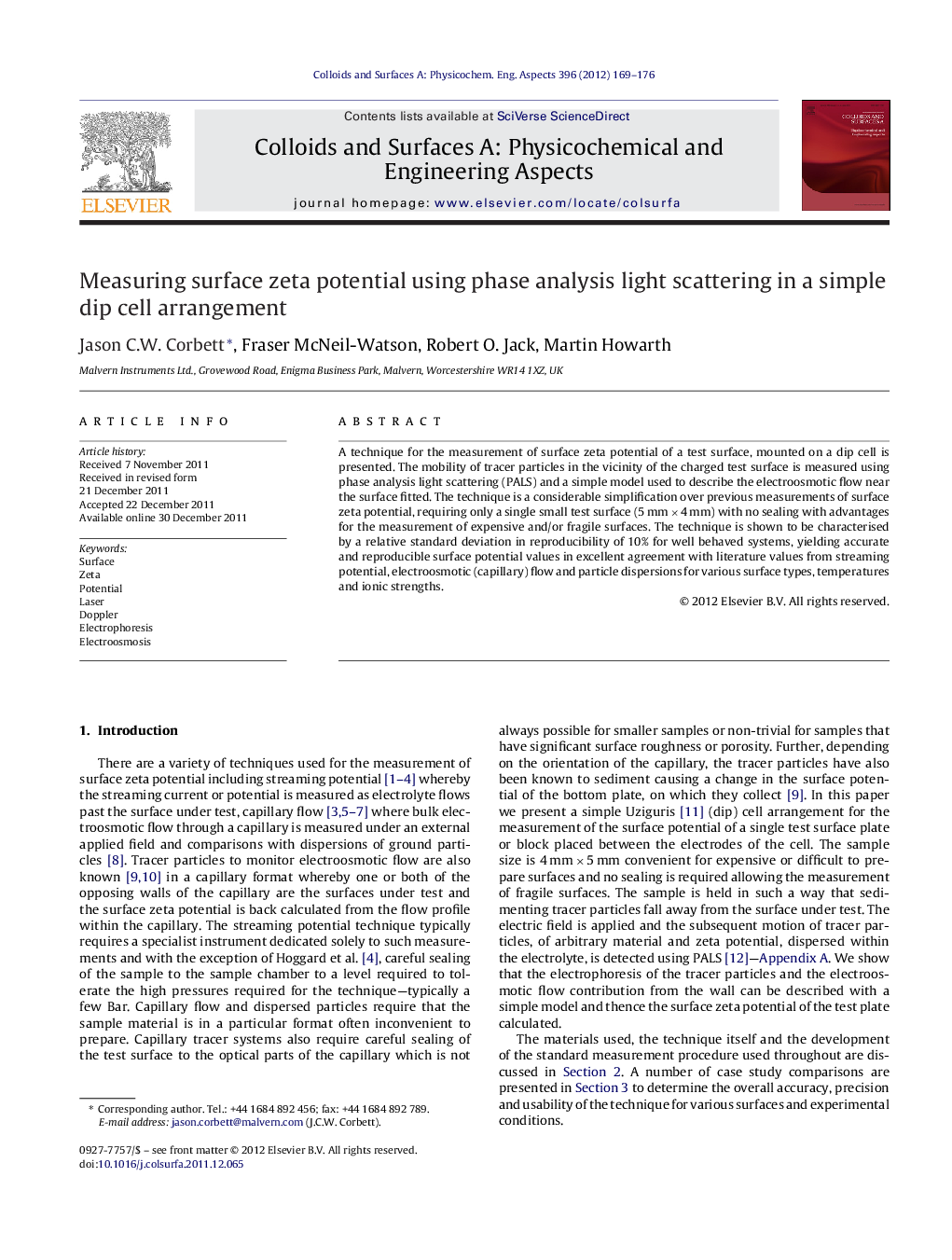| Article ID | Journal | Published Year | Pages | File Type |
|---|---|---|---|---|
| 594301 | Colloids and Surfaces A: Physicochemical and Engineering Aspects | 2012 | 8 Pages |
A technique for the measurement of surface zeta potential of a test surface, mounted on a dip cell is presented. The mobility of tracer particles in the vicinity of the charged test surface is measured using phase analysis light scattering (PALS) and a simple model used to describe the electroosmotic flow near the surface fitted. The technique is a considerable simplification over previous measurements of surface zeta potential, requiring only a single small test surface (5 mm × 4 mm) with no sealing with advantages for the measurement of expensive and/or fragile surfaces. The technique is shown to be characterised by a relative standard deviation in reproducibility of 10% for well behaved systems, yielding accurate and reproducible surface potential values in excellent agreement with literature values from streaming potential, electroosmotic (capillary) flow and particle dispersions for various surface types, temperatures and ionic strengths.
Graphical abstractFigure optionsDownload full-size imageDownload as PowerPoint slideHighlights► Simple technique for surface potential measurement by laser Doppler electrophoresis. ► Relative standard deviation in reproducibility of ≤10% for well behaved systems. ► Accurate and reproducible surface potential values in excellent agreement with literature values. ► Measurements with temperatures up to 40 °C and ionic strengths up to 50 mM.
